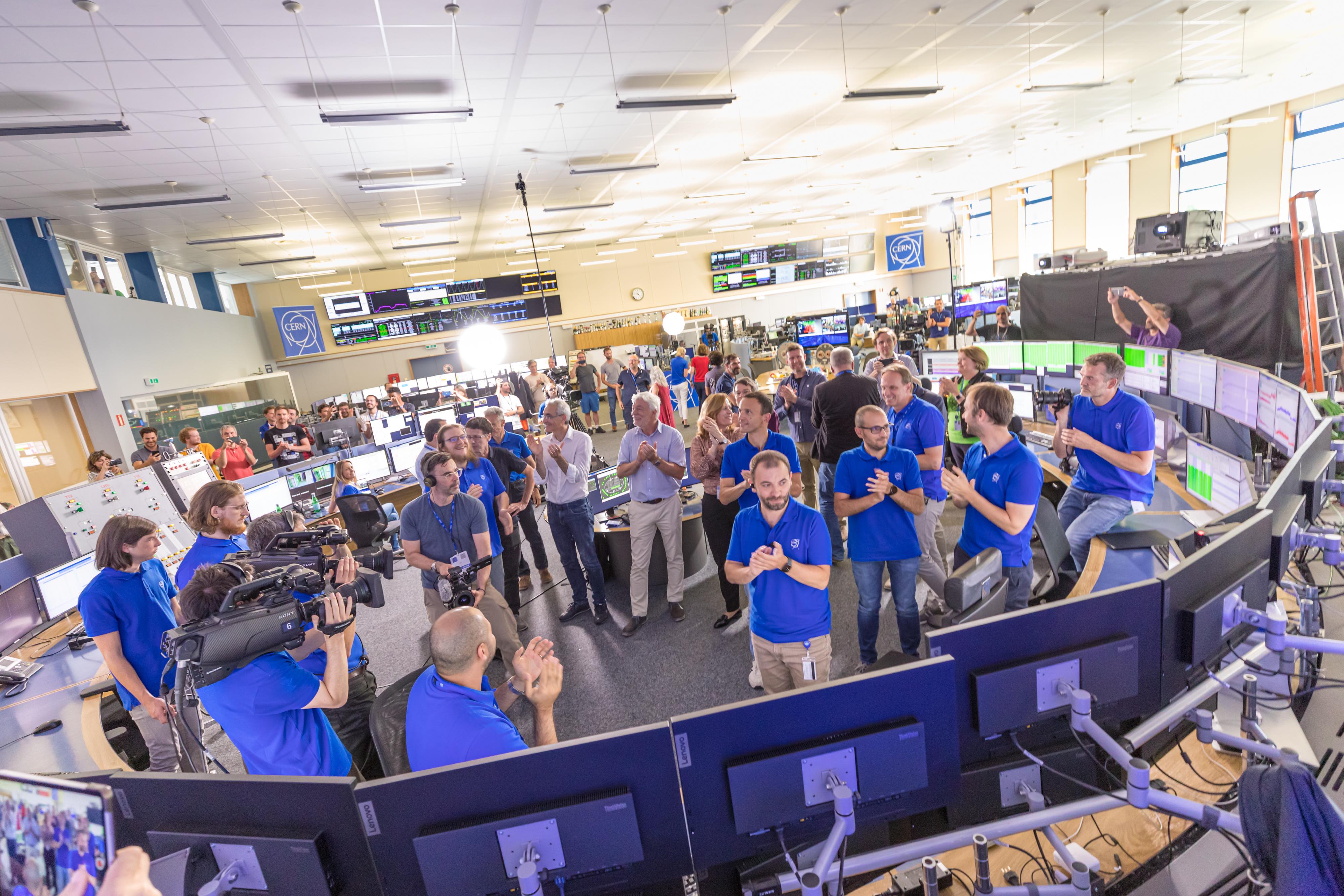A round of applause broke out in the CERN Control Centre on 5 July at 4.47 p.m. CEST when the Large Hadron Collider (LHC) detectors switched on all subsystems and started recording high-energy collisions at the unprecedented energy of 13.6 TeV, ushering in a new physics season. This feat was made possible thanks to the operators who had worked around the clock since the restart of the LHC in April to ensure the smooth beginning of these collisions with higher-intensity beams and increased energy.
After over three years of upgrade and maintenance work, the LHC is now set to run for close to four years at the record energy of 13.6 trillion electronvolts (TeV), providing greater precision and discovery potential. Increased collision rates, higher collision energy, upgraded data readout and selection systems, new detector systems and computing infrastructure: all these factors point to a promising physics season that will further expand the already very diverse LHC physics programme!
Pictures of the day are available here.
Videos of the event are accessible here.

